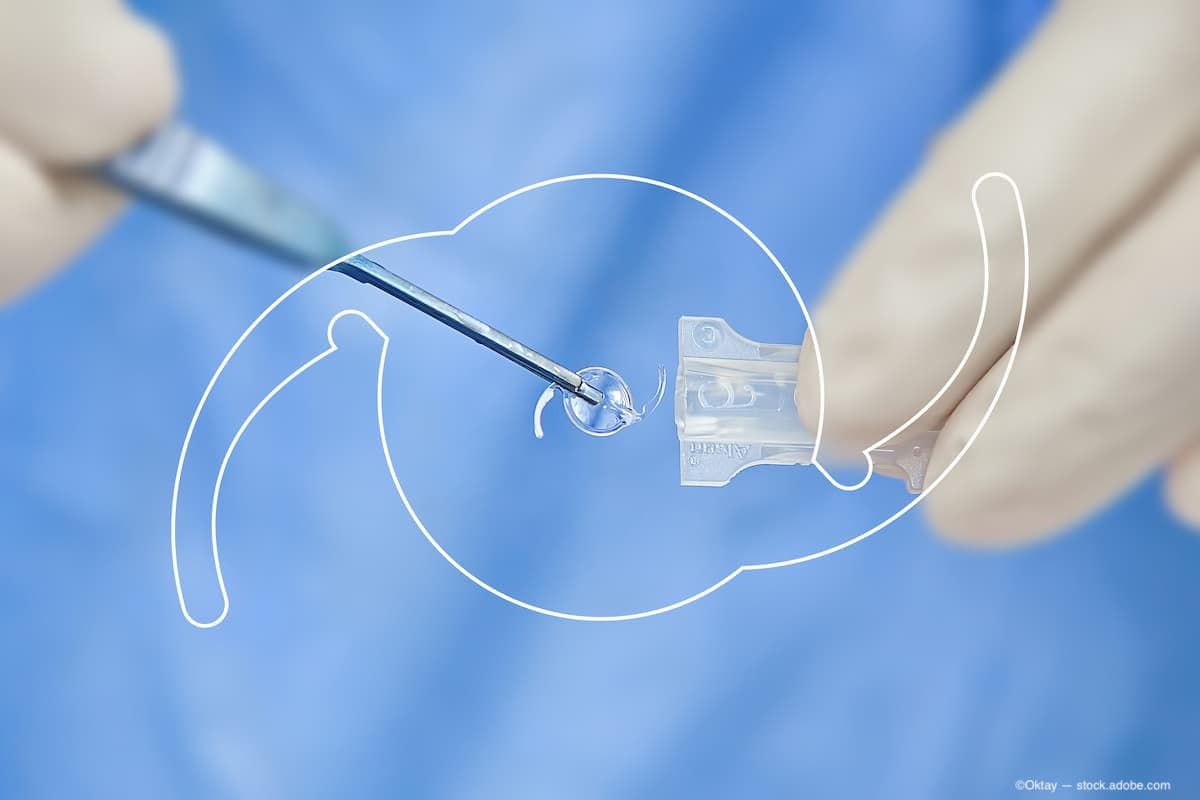Article
Comparing PCO and glistenings in 2 hydrophobic IOLs: 3-year results
In this article, Dr Johannson presents intraindividual IOL comparison follow-up results. Although similar levels of PCO development were observed for both AcrySof and Tecnis one-piece IOLs, fewer glistenings appeared in the Tecnis material, 3 years after implantation.
Take-home message: In this article, Dr Johannson presents intraindividual IOL comparison follow-up results. Although similar levels of PCO development were observed for both AcrySof and Tecnis one-piece IOLs, fewer glistenings appeared in the Tecnis material, 3 years after implantation.
By Dr Björn Johansson, MD, PhD FEBO
Over the years, intraocular lens (IOL) designers have developed a range of design concepts and materials to prevent or delay posterior capsular opacification (PCO). For IOLs intended for placement through an anterior capsulorhexis, within a capsular bag with intact posterior capsule, the benchmark choice has, for many years, been that of Alcon’s AcrySof IOL. A sharp posterior edge, in combination with the hydrophobic acrylic material’s “tacky” optic surface, which adheres to the posterior capsule, appears to prevent or delay the movement of lens epithelial cells to the central part of the posterior capsule.1,2
Development of PCO is low and slow with this lens but the appearance of glistenings – small, water-filled vacuoles – in the hydrophobic acrylic optic has caused some concern. Although several published studies did not find any association between glistenings and decreased visual function, there have been reported cases of IOL explantation due to dense glistenings that have compromised vision. 3,4,5 Therefore, it seems relevant to investigate long-term PCO development as well as glistening appearance when evaluating various IOL designs and material.
Comparing IOLs
During 2011, the Department of Ophthalmology at Linköping University initiated a study comparing the development of PCO and glistenings in two IOLs: The Alcon AcrySof (Alcon, Surrey, UK) vs the Abbott Medical Optics Tecnis One-piece (Abbott Laboratories Inc., Illinois, USA). The study was approved by the regional ethical committee and received support by way of an unrestricted grant from Abbott Medical Optics
Data from follow-up, 2 and 3 years after IOL implantation, was presented at the 2014 ESCRS annual congress, London, UK, and at the ASCRS annual congress, San Diego, California, USA, respectively.
Next: Study results
In the study, 50 patients (34 women and 16 men, mean age 73.8 years) with bilateral cataract who were scheduled for bilateral cataract surgery were enrolled. The first eye to be operated was randomised to receive either an AcrySof or a Tecnis IOL, the other eye received the IOL type not implanted in the first eye.
PCO development was followed through slitlamp photography and analysed with the semi-automated software POCOman.6 The percentage of the area surrounded by the capsulorhexis margin that was covered by PCO was measured, and the thickness of PCO was also taken into account to generate a severity score. Glistenings were graded semi-quantitatively from 0 to 4 as previously described by Werner et al.5 Examples of gradings can be seen in Figures 1 and 2.
Study results
The mean values of PCO percentage and severity score did not significantly differ at 2 and 3 year visits. (Figures 3a and 3b). PCO originated from the haptic-optic junction in several cases for both IOLs.
Glistenings were commonly found in high numbers in most AcrySof IOLs but in very few Tecnis IOLs (Figure 4). No correlation between glistenings and subjective or objective visual quality was observed in this material.
In summary, this intraindividual comparison shows similar behaviour for both AcrySof and Tecnis one-piece IOLs regarding PCO development 3 years after implantation. However, fewer glistenings appeared in the Tecnis material in comparison with the AcrySof IOLs.
Low figures for long-term PCO development are advantageous as regularly employing YAG-laser treatments to combat visually-disturbing PCO stretches can impact healthcare resources.
Clinical implications and future research
Due to occasional reports of necessary explantation of AcrySof IOLs with dense glistenings as a result of subjective visual complaints, their appearance in the IOL material is still a concern for many clinicians.5 The manufacturing process for AcrySof has recently - after the IOLs in this study were implanted - been changed with the aim of decreasing glistening development in the material. In vitro results appear promising,7 and it would be highly interesting to compare the results of the present study with similar clinical long-term follow-up of AcrySof IOLs manufactured with the new process. Until such data are available, the assumptions are that ZCB00 develops less glistenings than AcrySof and PCO development at 3 years after surgery is similar for the two IOLs.
References
- P.G. Ursell et al., J. Cataract Refract. Surg. 1998:24(3);352-360.
- D.J. Spalton. Eye. 1999:13;489-492.
- K. Miyata et al., J. Cataract Refract. Surg. 2012:38(2):221-226
- E. Mönestam and B. Anders. Acta Ophthalmologica. 2011:89(8);724-728.
- L. Werner. J. Cataract Refract. Surg. 2010:36(8);1398-1420.
- L. Bender et al., J. Cataract Refract. Surg. 2004:30(10);2058-2063.
- B.E. Thomes and T.A. Callaghan. Clin.Ophthalmol. 2013:7;1529.
Dr Björn Johansson, MD, PhD, FEBO
e: Bjorn.Johansson@regionostergotland.se
Dr Johansson is a senior staff member at the Department of Ophthalmology, Linköping University, Linköping, Sweden.
Financial disclosures: This study was supported by the Region of Östergötland, Sweden and by an unrestricted grant from Abbot Medical Optics. Abbot Medical Optics also reimbursed author’s travel and accommodation expenses to ESCRS and ASCRS annual congress. Dr Johansson is a consultant for Abbott Medical Optics, Alcon, Bausch&Lomb, Zeiss and Théa Nordic.
Newsletter
Don’t miss out—get Ophthalmology Times updates on the latest clinical advancements and expert interviews, straight to your inbox.





